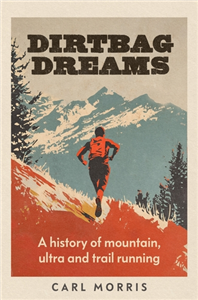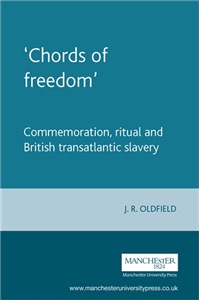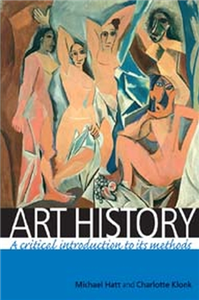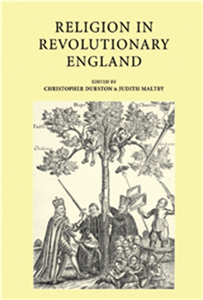Your Search Results
-
Promoted Content
-
Promoted Content
-
 Trusted Partner
August 1997
Trusted Partner
August 1997Der Fliegenmelker
Geschichten aus Damaskus
by Schami, Rafik / Illustriert von Leeb, Root
-
 Trusted Partner
May 1997
Trusted Partner
May 1997Gesammelte Olivenkerne
Aus dem Tagebuch der Fremde
by Schami, Rafik / Illustriert von Leeb, Root
-
 Trusted Partner
August 1997
Trusted Partner
August 1997Die Sehnsucht fährt schwarz
Geschichten aus der Fremde
by Schami, Rafik / Illustriert von Leeb, Root
-
 Trusted Partner
Literature & Literary StudiesApril 2020
Trusted Partner
Literature & Literary StudiesApril 2020Interweaving myths in Shakespeare and his contemporaries
by Janice Valls-Russell, Agnès Lafont, Charlotte Coffin
This volume proposes new insights into the uses of classical mythology by Shakespeare and his contemporaries, focusing on interweaving processes in early modern appropriations of myth. Its 11 essays show how early modern writing intertwines diverse myths and plays with variant versions of individual myths that derive from multiple classical sources, as well as medieval, Tudor and early modern retellings and translations. Works discussed include poems and plays by William Shakespeare, Christopher Marlowe and others. Essays concentrate on specific plays including The Merchant of Venice and Dido Queen of Carthage, tracing interactions between myths, chronicles, the Bible and contemporary genres. Mythological figures are considered to demonstrate how the weaving together of sources deconstructs gendered representations. New meanings emerge from these readings, which open up methodological perspectives on multi-textuality, artistic appropriation and cultural hybridity.
-
 Trusted Partner
Modern history to 20th century: c 1700 to c 1900May 2017
Trusted Partner
Modern history to 20th century: c 1700 to c 1900May 2017Inventing the cave man
From Darwin to the Flintstones
by Andrew Horrall. Series edited by Jeffrey Richards
Fred Flintstone lived in a sunny Stone Age American suburb, but his ancestors were respectable, middle-class Victorians. They were very amused to think that prehistory was an archaic version of their own world because it suggested that British ideals were eternal. In the 1850s, our prehistoric ancestors were portrayed in satirical cartoons, songs, sketches and plays as ape-like, reflecting the threat posed by evolutionary ideas. By the end of the century, recognisably human cave men inhabited a Stone Age version of late-imperial Britain, sending-up its ideals and institutions. Cave men appeared constantly in parades, civic pageants and costume parties. In the early 1900s American cartoonists and early Hollywood stars like Charlie Chaplin and Buster Keaton adopted and reimagined this very British character, cementing it in global popular culture. Cave men are an appealing way to explore and understand Victorian and Edwardian Britain.
-
 Trusted Partner
Humanities & Social SciencesMay 2017
Trusted Partner
Humanities & Social SciencesMay 2017Inventing the cave man
From Darwin to the Flintstones
by Andrew Horrall, Jeffrey Richards
Fred Flintstone lived in a sunny Stone Age American suburb, but his ancestors were respectable, middle-class Victorians. They were very amused to think that prehistory was an archaic version of their own world because it suggested that British ideals were eternal. In the 1850s, our prehistoric ancestors were portrayed in satirical cartoons, songs, sketches and plays as ape-like, reflecting the threat posed by evolutionary ideas. By the end of the century, recognisably human cave men inhabited a Stone Age version of late-imperial Britain, sending-up its ideals and institutions. Cave men appeared constantly in parades, civic pageants and costume parties. In the early 1900s American cartoonists and early Hollywood stars like Charlie Chaplin and Buster Keaton adopted and reimagined this very British character, cementing it in global popular culture. Cave men are an appealing way to explore and understand Victorian and Edwardian Britain.
-
 Trusted Partner
Lifestyle, Sport & LeisureNovember 2025
Trusted Partner
Lifestyle, Sport & LeisureNovember 2025Dirtbag dreams
A history of mountain, ultra and trail running
by Carl Morris
The first book to share the untold story of this unique sport, from its origins in the Victorian era to the present day. Over the past two decades, mountain, ultra and trail running has experienced a massive boom in participation, media attention and corporate consumerism. Once little more than an oddball recreation for mountain athletics romantics, the sport has become a mass activity in ways that were previously unimaginable. In Dirtbag dreams, Carl Morris offers the first complete account of mountain, ultra and trail running in North America and Britain. Revealing the sport's eccentric Victorian origins, he traces its development through 200 years of history, travelling from the Sierra Nevada and the English Lake District to the streets of London and New York. Packed with gripping races and colourful characters, Dirtbag dreams is the essential companion for anyone who wants to understand this unique endurance sport.
-
 Trusted Partner
Humanities & Social SciencesApril 2023
Trusted Partner
Humanities & Social SciencesApril 2023An archaeology of innovation
Approaching social and technological change in human society
by Catherine J. Frieman
An archaeology of innovation is the first monograph-length investigation of innovation and the innovation process from an archaeological perspective. It interrogates the idea of innovation that permeates our popular media and our political and scientific discourse, setting this against the long-term perspective that only archaeology can offer. Case studies span the entire breadth of human history, from our earliest hominin ancestors to the contemporary world. The book argues that the present narrow focus on pushing the adoption of technical innovations ignores the complex interplay of social, technological and environmental systems that underlies truly innovative societies; the inherent connections between new technologies, technologists and social structure that give them meaning and make them valuable; and the significance and value of conservative social practices that lead to the frequent rejection of innovations.
-
 Trusted Partner
Humanities & Social SciencesNovember 2012
Trusted Partner
Humanities & Social SciencesNovember 2012New frontiers
Imperialism's new communities in East Asia, 1842–1953
by Robert Bickers, Andrew Thompson, Christian Henriot, John Mackenzie
In the new world order mapped out by Japanese and Western imperialism in East Asia after the mid-nineteenth century opium wars, communities of merchants and settlers took root in China and Korea. New identities were constructed, new modes of collaboration formed and new boundaries between the indigenous and foreign communities were literally and figuratively established. Newly available in paperback, this pioneering and comparative study of Western and Japanese imperialism examines European, American and Japanese communities in China and Korea, and challenges received notions of agency and collaboration by also looking at the roles in China of British and Japanese colonial subjects from Korea, Taiwan and India, and at Chinese Christians and White Russian refugees. This volume will be of interest to students and scholars of the history and anthropology of imperialism, colonialism's culture and East Asian history, as well as contemporary Asian affairs. ;
-
 Trusted Partner
Humanities & Social SciencesMarch 2017
Trusted Partner
Humanities & Social SciencesMarch 2017New frontiers
Imperialism's new communities in East Asia, 1842–1953
by Robert Bickers, Christian Henriot
In the new world order mapped out by Japanese and Western imperialism in East Asia after the mid-nineteenth century opium wars, communities of merchants and settlers took root in China and Korea. New identities were constructed, new modes of collaboration formed and new boundaries between the indigenous and foreign communities were literally and figuratively established. Newly available in paperback, this pioneering and comparative study of Western and Japanese imperialism examines European, American and Japanese communities in China and Korea, and challenges received notions of agency and collaboration by also looking at the roles in China of British and Japanese colonial subjects from Korea, Taiwan and India, and at Chinese Christians and White Russian refugees. This volume will be of interest to students and scholars of the history and anthropology of imperialism, colonialism's culture and East Asian history, as well as contemporary Asian affairs.
-
 Trusted Partner
Political ideologiesFebruary 2014
Trusted Partner
Political ideologiesFebruary 2014The IRA 1956–69
Rethinking the Republic
by Matt Treacy
While there have been many books written about the IRA since 1916, comparatively little attention has been paid to the organisation during the 1960s, despite the fact that the internal divisions culminating in the 1969 split are often seen as key to the conflict which erupted that year. This book, newly available in paperback, redresses that vacuum and through an exhaustive survey of internal and official sources, as well as interviews with key IRA members, provides a unique and fascinating insight into radical Republican politics which will be of interest to those interested in Irish history and politics. The author looks at the root of the divisions which centred on conflicting attitudes within the IRA on armed struggle, electoral participation and socialism. He argues that while the IRA did not consciously plan the northern 'Troubles', the internal debate of the 1960s had implications for what happened in 1969.
-
 Trusted Partner
Humanities & Social Sciences
Trusted Partner
Humanities & Social SciencesA Guilty Conscience – Nuisance or Asset?
by Maja Storch, Gerhard Roth
A guilty conscience can be a real nuisance. There is simply no rest and you can’t just turn it off through rational thought. Psychologically, in psychotherapy, advising and coaching, a guilty conscience is one of the most persistent and difficult symptoms to pin down. Maja Storch and Gerhard Roth ask the questions: why feelings of guilt are so prolonged and how to deal with them. Gerhard Roth explains which components of the human brain, over the course of its development, give rise to a phenomenon as complex as a guilty conscience. Using three practical and easily understandable examples, Maja Storch presents a system for everyday use which can be used to get to the root of your own guilty conscience and to develop a plan for dealing with it. For:• wide audience• therapists• coaches
-
 Trusted Partner
Humanities & Social SciencesNovember 2021
Trusted Partner
Humanities & Social SciencesNovember 2021The ABC of the projectariat
Living and working in a precarious art world
by Kuba Szreder
The ABC of the projectariat contributes new thinking on and practical responses to the widespread problem of precarious labour in the field of contemporary art. It works as both a critical analysis and a practical handbook, speaking to and about the vast cohort of artistic freelancers worldwide. In an accessible ABC format, the book strikes a unique balance between the practical and the theoretical: the analysis is backed up by lived experience, the arguments are rooted in concrete examples and there are suggestions for constructive action. Roughly half of the entries expose the structural underpinnings of projects and circulation, isolating traits such as opportunism, neoliberalism, inequality, fear and cynicism at the root of the condition of the projectariat. This discussion is paired with a practical account of different modes of action, such as art strikes, productive withdrawals, political struggles and better social time machines. Just as proletarians had nothing to lose but their chains, the projectarians have nothing to miss but their deadlines.
-
 Trusted Partner
Humanities & Social SciencesDecember 2008
Trusted Partner
Humanities & Social SciencesDecember 2008The family tree detective
Tracing your ancestors in England and Wales
by Colin Rogers
The long-awaited fourth edition of this best-selling manual continues to offer up-to-date guidance both to newcomers and to the more experienced, on how to make best use of the labyrinth of genealogical sources in England and Wales. It takes into account recent, and even some future, changes to the civil registration system, and incorporates many of the vast sources newly available on the internet. There is also a substantial bibliography for those who discover that their ancestors migrated from other countries. New appendices provide research into underregistration of birth and death, and hitherto unpublished details from the 1915 and 1939 National Registers. The family tree detective remains an indispensible source of information on how to locate births, marriages and deaths, and alternative strategies if those searches fail. Dr Colin D. Rogers is a Fellow of the Society of Genealogists, a member of AGRA (the Association of Genealogists and Researchers in Archives), and was for thirty years the Hon. General Editor of the Lancashire Parish Register Society. He runs a consultancy helping banks and solicitors to identify and locate beneficiaries. ;
-
 Trusted Partner
Humanities & Social SciencesMarch 2007
Trusted Partner
Humanities & Social SciencesMarch 2007‘Chords of freedom’
Commemoration, ritual and British transatlantic slavery
by J. R. Oldfield
How should we as Britons remember transatlantic slavery? How has slavery been remembered in the past? 'Chords of freedom' sets out to answer these questions and, in doing so, traces the way in which British transatlantic slavery has been absorbed into the nation's collective memory. By combining two current historiographical preoccupations - the construction of public memory and British transatlantic slavery - this fascinating book focuses on the way in which the British traditionally have been taught to view transatlantic slavery through the moral triumph of abolition. The author traces the construction of this national history through a number of case studies, including visual images, literary memorials (the competing accounts of the anti-slavery movement produced by Thomas Clarkson and Robert and Samuel Wilberforce), monument-memorials, galleries and museums, and commemorative rituals from the nineteenth century to the present day. A separate chapter also considers how Britain's example in abolishing first the slave trade (1807) and then colonial slavery (1833-34) impacted on the rituals of the American anti-slavery movement, and served as a convenient symbol of the potential of freedom in the British West Indies. 'Chords of freedom' offers valuable new insights into the way in which a 'culture of abolition' took root in Britain, and how our views of transatlantic slavery and figures like William Wilberforce have been revised and amended to reflect the changing demands of a series of 'present days'. Its cross-disciplinary approach will appeal to a broad spectrum of specialists, as well as to undergraduates and postgraduates. ;
-
 Trusted Partner
2024
Trusted Partner
2024Why headless males are better lovers
Sex and reproduction in the animal kingdom
by Monika Niehaus / Michael Wink
"Sex sells" also applies to evolution. Without sex, there is no genetic variation, and without genetic variation, there is no natural selection and evolution. When it comes to sex and reproduction, all animals have things in common, but there are also many variations. In this game of the sexes, everything revolves around the conflicts of interest between females and males, the diversity of mating systems, matriarchal and patriarchal communities and the securing of paternity, whether through beauty, song and dance or violence.
-
 Trusted Partner
The ArtsMarch 2006
Trusted Partner
The ArtsMarch 2006Art history
A critical introduction to its methods
by Michael Hatt, Charlotte Klonk
Art History: A critical introduction to its methods provides a lively and stimulating introduction to methodological debates within art history. Offering a lucid account of approaches from Hegel to post-colonialism, the book provides a sense of art history's own history as a discipline from its emergence in the late-eighteenth century to contemporary debates. By explaining the underlying philosophical and political assumptions behind each method, along with clear examples of how these are brought to bear on visual and historical analysis, the authors show that an adherence to a certain method is, in effect, a commitment to a set of beliefs and values. The book makes a strong case for the vitality of the discipline and its methodological centrality to new fields such as visual culture. This book will be of enormous value to undergraduate and graduate students, and also makes its own contributions to ongoing scholarly debates about theory and method. ;
-
 Trusted Partner
Humanities & Social SciencesJanuary 2007
Trusted Partner
Humanities & Social SciencesJanuary 2007Religion in Revolutionary England
by Christopher Durston, Judith Maltby
This book offers a collection of essays tightly focused around the issue of religion in England between 1640 and 1660, a time of upheaval and civil war in England. Edited by well-known scholars of the subject, topics include the toleration controversy, women's theological writing, observance of the Lord's Day and prayer books. To aid understanding, the essays are divided into three sections examining theology in revolutionary England, inside and outside the revolutionary National Church and local impacts of religious revolution. Carefully and thoughtfully presented, this book will be of great use for those seeking to better understand the practices and patterns of religious life in England in this important and fascinating period. ;



























